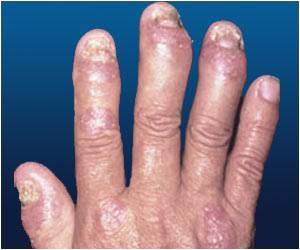“Many pharmacological treatments for hand osteoarthritis pain are available, of which most have no proven efficacy,” said Anna Dossing from the University of Copenhagen in Denmark. Hand osteoarthritis is a common disease affecting 15.9 percent of women and 8.2 percent of men aged between 40-84 years. The incidence increases with age, and thus the burden will grow with the ageing population.
The condition causes pain and impairs grip and motor function, affecting people’s abilities with activities of daily living and work. People also experience dull or burning joint pain, morning stiffness, and swollen joints.The study explored research databases, finding 72 trials involving a total of 7,609 patients with 29 treatments provided over an average period of three months. Of the total, 60 trials, comprising 5,246 patients, looked specifically at pain and were included by researchers in a pooled data analysis. The results showed that non-steroidal anti-inflammatories (NSAIDs) and steroid tablets performed better than placebos.
However, the effectiveness of topical creams and gels was not clear. “For hand osteoarthritis, oral NSAIDs and oral glucocorticoids appear effective, whereas the efficacy of topical NSAIDs remains questionable,” Dossing said.
Advertisement
Researchers said their findings “echo those of previous pooled data analyses” but “contradict the recommendations of existing clinical guidelines”, the report said. “These findings raise questions about the evidence supporting the current treatment recommendation for intra-articular therapies and emphasize the need for future large-scale trials with a rigorous methodology to establish the efficacy of promising interventions such as topical NSAIDs,” the team said in the paper.
Source: IANS



